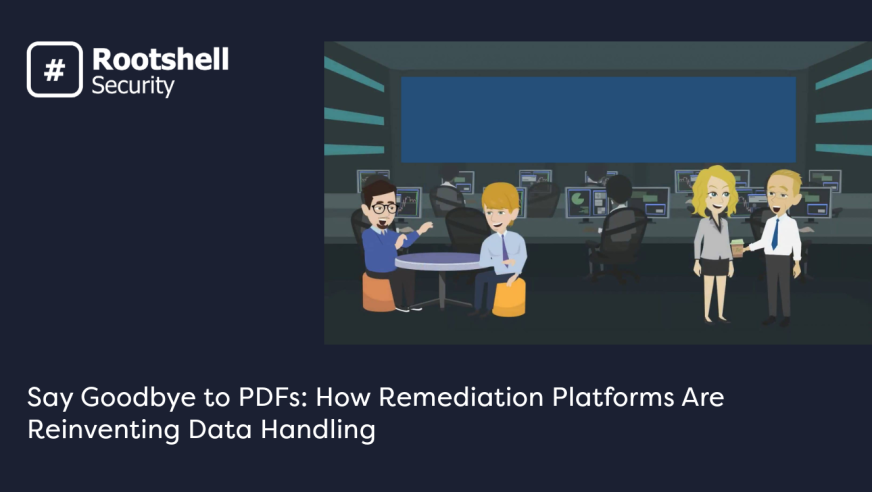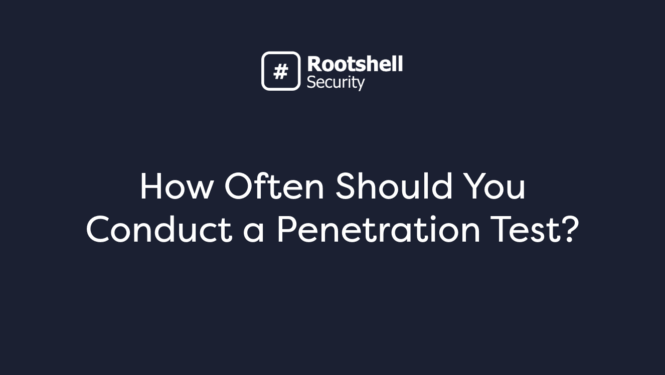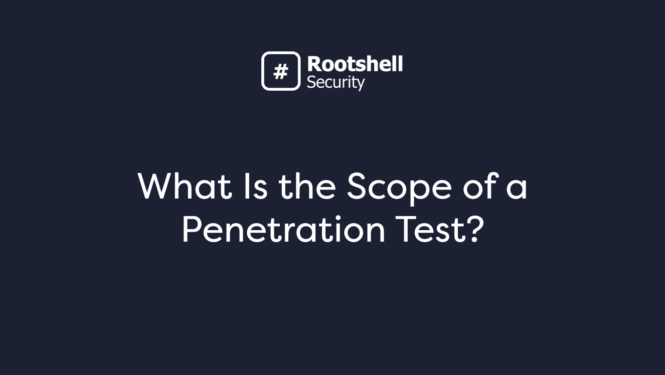Say goodbye to PDFs
It’s likely that data guides nearly every decision of your vulnerability remediation process, yet managing it is typically laborious and time consuming. You may find yourself hunting through numerous PDF reports to find the data you need, or manually transferring results to spreadsheets; a process that can lend itself to human error. Thankfully, vulnerability remediation platforms are improving how threat service data is managed, and in doing so, transforming the speed at which teams can remediate issues.
How does a remediation platform work?
A remediation platform provides a centralised place for security consultants to publish test results. It unifies your data by storing all your results in one, easily-retrievable location. This could include results from penetration tests, managed vulnerability scans, and a number of other service lines.
Read on to find out how a remediation platform, such as the Rootshell Platform, enhances data management, and how this can benefit your entire remediation process.
The Rootshell Platform unifies your reports by storing results from different threat services in one place. This includes the ability to add reports from different vendors, enabling you to centralise all your data from past and current engagements. You can then search or filter your results to easily retrieve the data you need. By unifying your data, you’ll also gain clearer visibility of your organization’s security posture.
Automates Data Handling
When it comes to maintaining your security posture, time is of the essence. Transferring results from PDF reports to spreadsheets is a manual and repetitive process, which could be slowing down your team’s ability to remediate. A remediation platform can automate data handling. For example, The Rootshell Platform automates the process of transferring your results to a format that is easy to search, filter, and manage. This frees up time for more important tasks.
Gives You A Holistic View
Analysing data in isolation can restrict you from understanding the context of your results. Remediation platforms consolidate data from different services to help you gain a holistic view of your security posture. Even better, a vendor-agnostic platform, such as The Rootshell Platform, enables you to add results from different providers, so you are not limited to one vendor to benefit from this essential insight.
The Rootshell Platform takes the legwork out of reporting. It generates a dashboard of useful stats and reports to illustrate the progress of your vulnerability remediation process. For example, you can see summaries of how many issues have been remediated for current projects, as well as trending data showing how your security posture has improved over time. This dynamic dashboard helps simplify your reporting process, while making your data far more useful and actionable.
Improves Collaboration
Remediating issues in spreadsheets doesn’t offer much in the way of collaboration. A remediation platform makes it easy to share data and delegate issues. On The Rootshell Platform, for example, you can assign issues to colleagues and track the progress of your remediation process as a team. You can also add tags to personalise the way you organise your data; for example, you can use them to introduce a prioritisation system for your assets, so your team know exactly where to begin.
Provides Meaningful Insights
Once you receive your PDF reports, the onus is typically on your team to turn your results into actionable insights. Many teams simply don’t have the resources or expertise to do this. A remediation platform serves you insights by generating dashboards of useful stats and reports. For example, you can see summaries of how many issues have been remediated, as well as trending data showing how your security posture has improved over time. This makes your data far more relevant and actionable; crucial for enabling effective remediation.
Within The Rootshell Platform, each issue is categorised by clear, colour-coded risk ratings. The ratings range from ‘low’ to ‘critical’, providing your team with a logical system for remediating issues. Your team can filter by risk rating, and even receive email alerts when critical issues are added, enabling them to remediate the most serious issues faster than ever before.
The Rootshell Platform is designed to improve collaboration between team members, suppliers, partners, and vendors. The platform allows you to create accounts for colleagues, assign issues to them, and track progress as a team. You can see results uploaded by your testers in real-time and comment on issues for feedback. You can even add third-parties to the platform, such as a web app developer, so they communicate directly with testers to aid your vulnerability remediation process.
Ready to upgrade from PDFs and spreadsheets?
As you can see, a remediation platform, such as the Rootshell Platform, can improve every aspect of how you manage data from your threat services, which greatly enhances the speed and efficiency of your remediation process. To learn more about The Rootshell Platform, get in touch to book your demo.
On The Rootshell Platform, you can create tags for your projects; these are customisable labels to help you personalise how you organise your data. You can use tags to illustrate a prioritisation system for your projects. Your team will then know exactly which issues to start working on, and can even filter by tag to seamlessly find the information they need.
Looking to learn more about The Rootshell Platform? Find out more about how it can improve your vulnerability remediation process.



